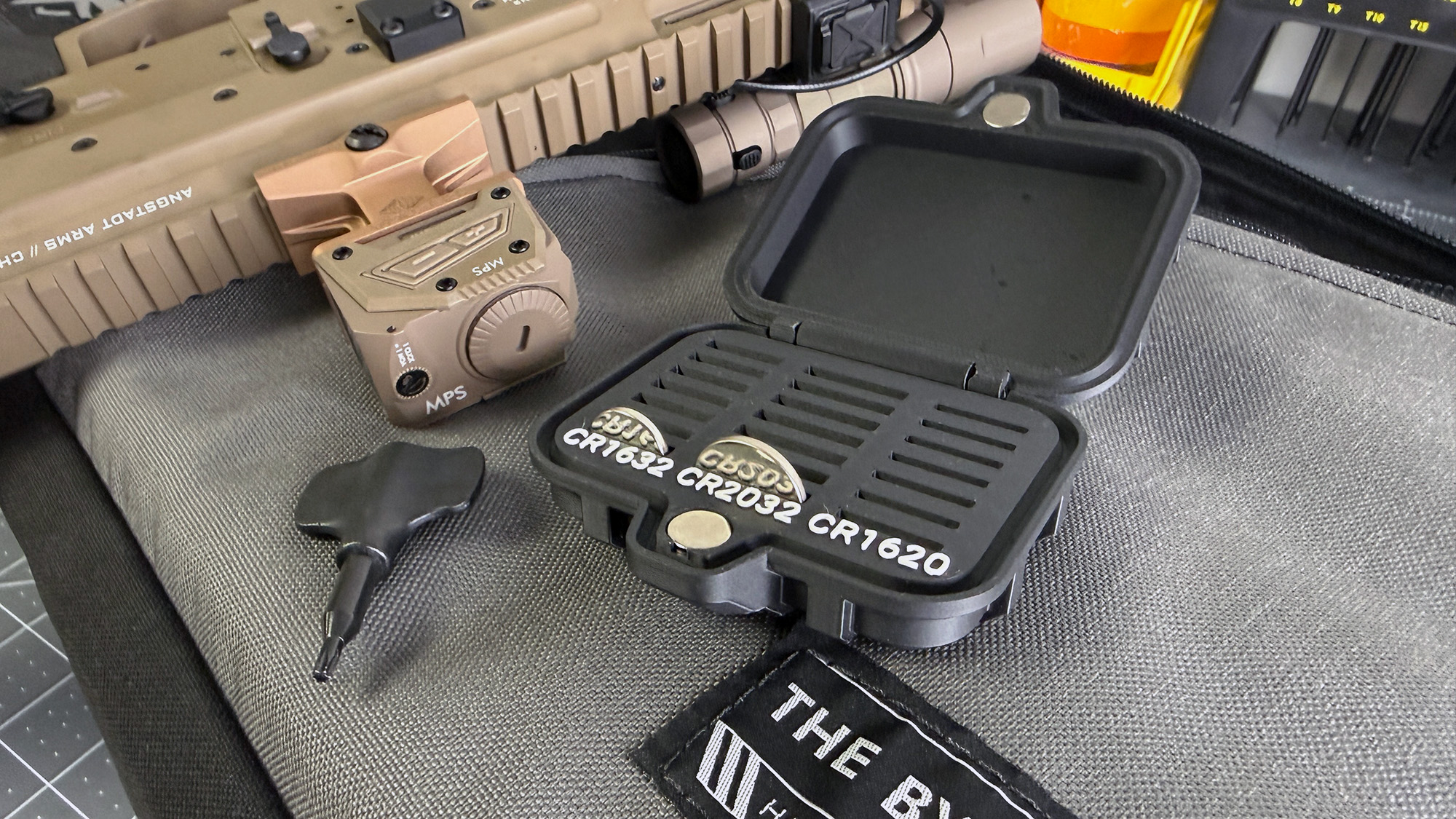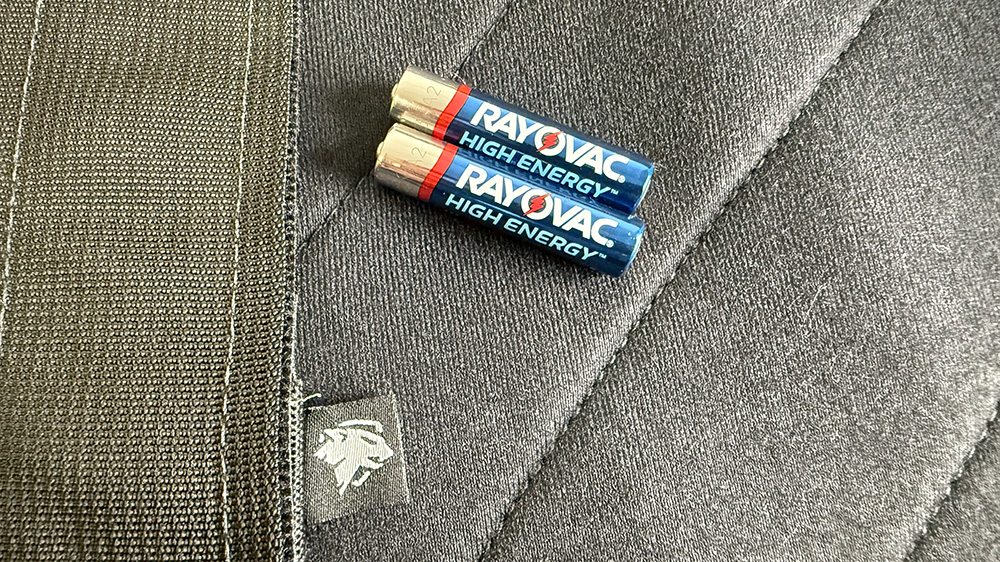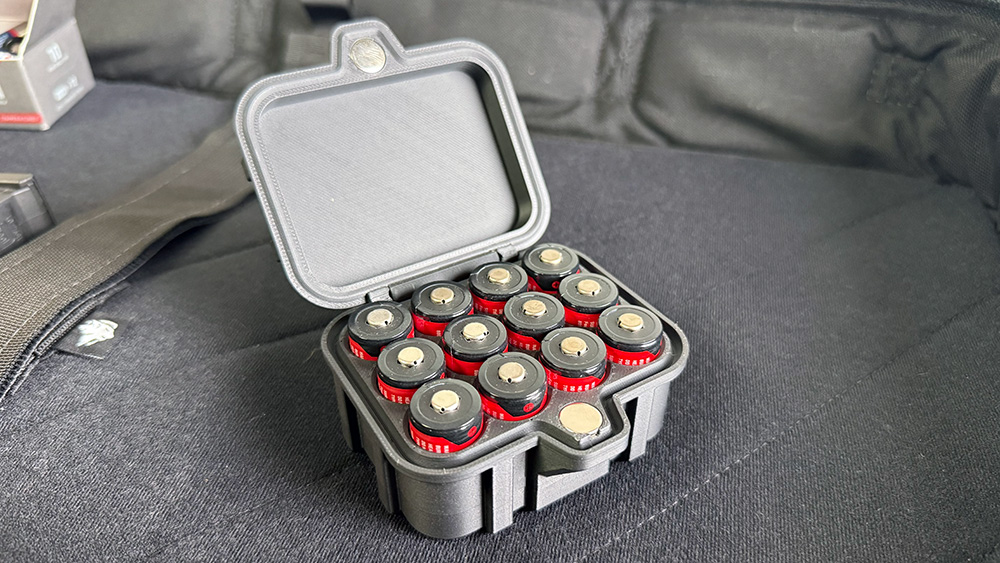
We may earn revenue from product links on this page and participate in affiliate programs. Learn More ›


We may earn revenue from product links on this page and participate in affiliate programs. Learn More ›
Every shooter has experienced that sinking feeling: you’re at the range, ready to zero your red dot, or worse—in a critical moment—and your optic flickers to life weakly before dying completely.
Dead batteries in firearms optics and weapon-mounted lights aren’t just inconvenient; they can render your defensive tools useless when you need them most.
The batteries powering your red dot sights, holographic optics, and weapon lights are often an afterthought until they fail.
Consider the common scenarios that plague shooters:
The Forgotten Change-Out
You know you should swap the battery in your carry optic every six months, but life gets busy.
Months turn into a year, then longer.
You rationalize that the battery still works—until it doesn’t. Many shooters discover dead batteries only when they need their equipment most, whether on the range or, far worse, in an emergency.
The Range Bag Disaster
Loose batteries rolling around in your range bag contact keys, spare change, or each other. Coin cell batteries short out when their terminals touch metal objects.
CR123 batteries get dented or their wrappers tear.

By the time you fish them out, you’re left wondering which batteries are fresh and which have been bouncing around for months, potentially damaged and unreliable.
The “Where Did I Put Those?” Moment
You arrive at the range only to realize your optic battery is dead. You know you threw some spares in your bag somewhere.
Five minutes of digging through pockets, pouches, and ammunition boxes later, you’ve wasted valuable range time—and maybe you still haven’t found them.
The Corrosion Problem
Batteries stored improperly can corrode or leak, potentially damaging not only themselves but also your expensive optics.
Moisture, temperature fluctuations, and physical damage to battery casings all accelerate degradation.
The Mixed Battery Nightmare

You finally find your spare batteries, but now you’re facing a new problem: which ones are fresh?
That pile of CR2032s in the bottom of your bag could be dead batteries you removed months ago or brand new ones you just bought.
Without proper organization, it’s a guessing game.
Modern firearms optics and lights primarily use a few battery types:

Coin Cell Batteries (CR2032, CR1632, CR1620) power most red dot sights, including popular models from Trijicon, Holosun, and Aimpoint. These thin, circular batteries are reliable but easy to lose and prone to shorting when stored improperly.

CR123A Batteries are the workhorses of weapon-mounted lights and some optics. These lithium batteries provide excellent power density and shelf life but need protection from physical damage and terminal contact.

AA and AAA Batteries power electronic hearing protection and some accessories, making them essential range companions even if they don’t directly power your primary defensive systems.
Effective battery management requires more than throwing spare batteries in a ziplock bag.
Purpose-built storage solutions address the core problems shooters face:
The Coin Battery Vault provides dedicated, organized storage for the CR1620, CR1632, and CR2032 batteries that power red dot sights.
This 3D-printed vault features a snap-fit lid that keeps batteries secure and prevents them from contacting each other or other objects that could cause shorts. At just 3″ x 2.5″ x 1″, it’s compact enough to toss in any range bag or keep in your vehicle.
For shooters who need batteries and tools together, the Optic Battery Pouch takes organization further. It includes custom 3D-printed holders for CR1620, CR1632, and CR2032 coin cells, plus slots for CR123/CR123A batteries.
The zippered tool pocket provides space for the Allen keys and adjustment tools needed for optic maintenance, ensuring everything you need to service your red dot is in one place.
The CR123 Battery Vault solves the problem of CR123A batteries rolling loose in your bag.
With dimensions of 3.5″ x 2.5″ x 1.75″, this dedicated storage case holds multiple CR123 and CR123A batteries in individual compartments, preventing physical damage and terminal contact.
The snap-fit lid keeps everything secure while remaining easy to access when you need a fresh battery for your weapon light.
The Combo Battery Vault is the comprehensive solution for shooters who run various optics and lights.
It stores both coin cell batteries and CR123A batteries in organized compartments, providing a single, protective storage solution for all your critical batteries.
This is particularly valuable for shooters who run different equipment—perhaps a red dot on a rifle and a CR123-powered weapon light, or multiple firearms with different optic requirements.
Lynx Defense has also integrated battery storage into its accessory pouches.
The Ear Pro Pouch includes two elastic compartments designed explicitly for four AA or four AAA batteries—perfect for keeping fresh batteries for electronic hearing protection readily accessible.
Similarly, the Ear & Eye Pro Pouch features configurable battery pouches, allowing you to customize your battery storage alongside your essential range gear.
Proper storage is only part of the equation. Implement these practices to ensure your optics and lights remain operational:
Establish a Change Schedule
Replace batteries in defensive optics every six months, regardless of whether they seem to be working. Mark the date on your calendar or set a reminder.
For range optics, change batteries annually or after extended use.
Keep Spares Organized

Use dedicated storage solutions to keep fresh batteries separate from used ones.
If you remove a battery from an optic but it still has life, either use it immediately in a less critical application or recycle it—don’t risk mixing it with fresh batteries.
Protect from Shorts
Never store batteries loose where they can contact metal objects or each other.
This is especially critical for coin cell batteries, which can short out easily and may even generate enough heat to cause burns or start fires.
Monitor Expiration Dates
Most lithium batteries have excellent shelf lives (often 10 years), but that doesn’t mean they last forever. Check expiration dates on battery packaging and rotate your stock.
Temperature Considerations
Batteries stored in vehicles face temperature extremes that can reduce their lifespan.
While short-term vehicle storage is fine for redundancy, your primary battery storage should be in more stable conditions.
Test Before You Need
When you replace an optic battery on schedule, test-fire with the new battery before you need to depend on it.
This ensures the battery is good and properly installed.
Effective battery management for firearms optics and weapon lights requires a systematic approach:
The cost of battery storage solutions is minimal compared to the expense of your optics and lights—and infinitely less than the cost of equipment failure at a critical moment.
By implementing proper battery management with purpose-built storage, you eliminate one of the most common and preventable failures in modern shooting systems.
Your red dot sight is only as reliable as its battery. Your weapon light is only as effective as its power source.
Don’t let poor battery management be the weak link in your defensive or competition setup. Invest in proper battery storage, establish good maintenance habits, and ensure your equipment is always ready when you need it.